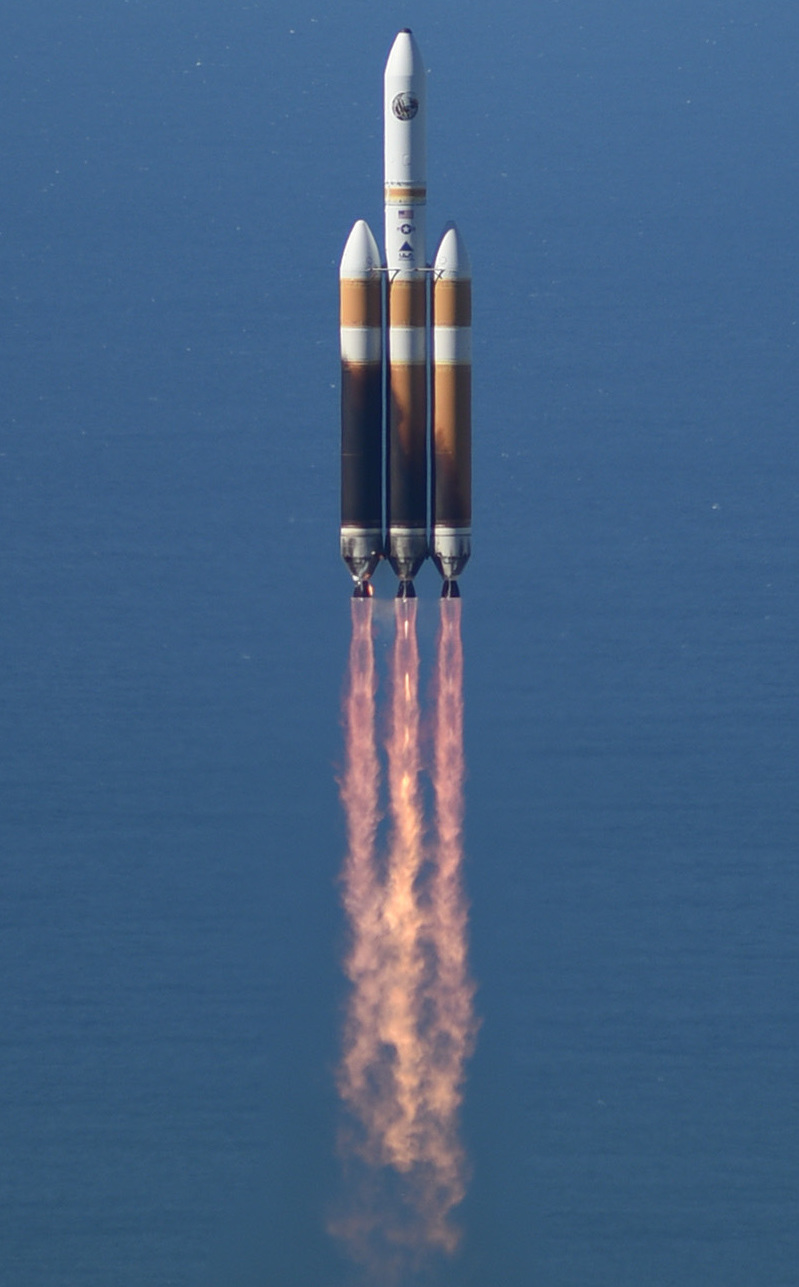Delta IV Heavy

NRO payload launch (18 January 2019). Photo Credit : Public domain. U.S. Air Force photo by Michael Peterson, via Wikimedia Commons.
The Delta IV Heavy (Delta 9250H) is an expendable heavy-lift launch vehicle, the largest type of the Delta IV family
Quick Facts About Falcon Heavy.
- Type: Orbital heavy-lift launch vehicle.
- Origin : United states.
- Manufacturer: United Launch Alliance.
- In service : 21 December 2004 - Active.
- Mass : 733,000 kg (1,616,000 lb).
- Length/Height : 72 m (236 ft).
- Diameter : 5 m (16 ft).
- Width : 15 m (49 ft).
- Payload to LEO : 28,790 kg (63,470 lb).
- Payload to GTO : 14,220 kg (31,350 lb).
- Propellant: LH2 / LOX.
- Engines: Boosters: 2 x 1 RS-68A with thrust of 6,280 kN (1,410,000 lbf). First stage: 1 x RS-68A with thrust of 3,140 kN (710,000 lbf). Second stage : 1 x RL10-B-2 with thrust of 110 kN (25,000 lbf).
The Delta heavy is the world's second highest-capacity launch vehicle in operation, behind SpaceX's Falcon Heavy (with its core stage expended), and closely followed by CNSA's Long March 5. It is manufactured by United Launch Alliance and was first launched in 2004.
The Delta IV Heavy consists of a central Common Booster Core (CBC), with two additional CBCs as liquid rocket boosters instead of the GEM-60 solid rocket motors used by the Delta IV Medium+ versions. At lift off, all three cores operate at full thrust, and 44 seconds later the center core throttles down to 55% to conserve fuel until booster separation. The boosters burn out at 242 seconds after launch and are separated as the core booster throttles back up to full thrust. The core burns out 86 seconds later, and the second stage completes the ascent to orbit.
The Delta IV line of rockets was developed by McDonnell Douglas, later United Launch Alliance. The Delta IV Heavy is the most powerful member of the line, which also includes the smaller Delta IV Medium. The Delta IV Heavy can lift 28,370 kg (62,550 lb) to low Earth orbit and 13,810 kg (30,450 lb) to geostationary transfer orbit (GTO). It is an all liquid-fueled launch vehicle, consisting of an upper stage, one main booster and two strap-on boosters.
The first launch of the Delta IV Heavy in 2004 carried a boilerplate payload and was a partial failure. Cavitation in the liquid-oxygen propellant lines caused shutdown of both boosters eight seconds early, and the core engine nine seconds early; this resulted in a lower staging velocity for which the second stage was unable to compensate. The payload was left in a lower than intended orbit. Its first operational payload was the DSP-23 satellite, successfully launched in 2007; it was then used to launch a further five visual and electronic reconnaissance satellites for the National Reconnaissance Office (NRO) through 2013.
In December 2014, the Delta IV Heavy was used to launch an uncrewed test flight of the Orion spacecraft, designated Exploration Flight Test 1 (EFT-1). After several delays, the mission was successfully launched at 12:05 UTC on 5 December 2014.
Credit/References and for further info please see:
https://en.wikipedia.org/wiki/Delta_IV_Heavy

Delta IV Heavy on pad with Orion (3 December 2014). Photo Credit : Nasa, via Wikimedia Commons.